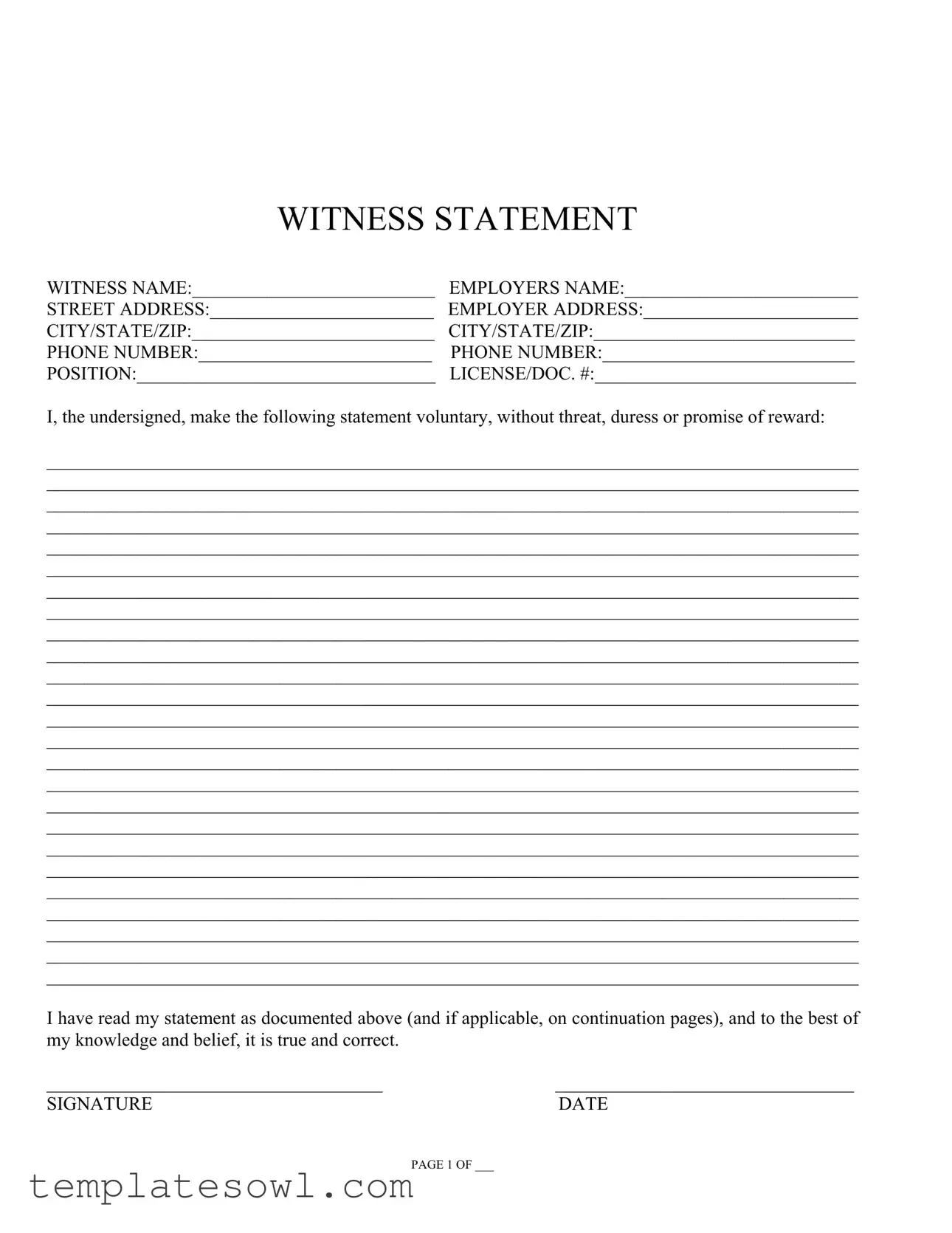WITNESS STATEMENT
WITNESS NAME:__________________________ |
EMPLOYERS NAME:_________________________ |
STREET ADDRESS:________________________ |
EMPLOYER ADDRESS:_______________________ |
CITY/STATE/ZIP:__________________________ |
CITY/STATE/ZIP:____________________________ |
PHONE NUMBER:_________________________ |
PHONE NUMBER:___________________________ |
POSITION:________________________________ |
LICENSE/DOC. #:____________________________ |
I, the undersigned, make the following statement voluntary, without threat, duress or promise of reward:
_______________________________________________________________________________________
_______________________________________________________________________________________
_______________________________________________________________________________________
_______________________________________________________________________________________
_______________________________________________________________________________________
_______________________________________________________________________________________
_______________________________________________________________________________________
_______________________________________________________________________________________
_______________________________________________________________________________________
_______________________________________________________________________________________
_______________________________________________________________________________________
_______________________________________________________________________________________
_______________________________________________________________________________________
_______________________________________________________________________________________
_______________________________________________________________________________________
_______________________________________________________________________________________
_______________________________________________________________________________________
_______________________________________________________________________________________
_______________________________________________________________________________________
_______________________________________________________________________________________
_______________________________________________________________________________________
_______________________________________________________________________________________
_______________________________________________________________________________________
_______________________________________________________________________________________
_______________________________________________________________________________________
I have read my statement as documented above (and if applicable, on continuation pages), and to the best of my knowledge and belief, it is true and correct.
____________________________________ |
________________________________ |
SIGNATURE |
DATE |
|
PAGE 1 OF ___ |
